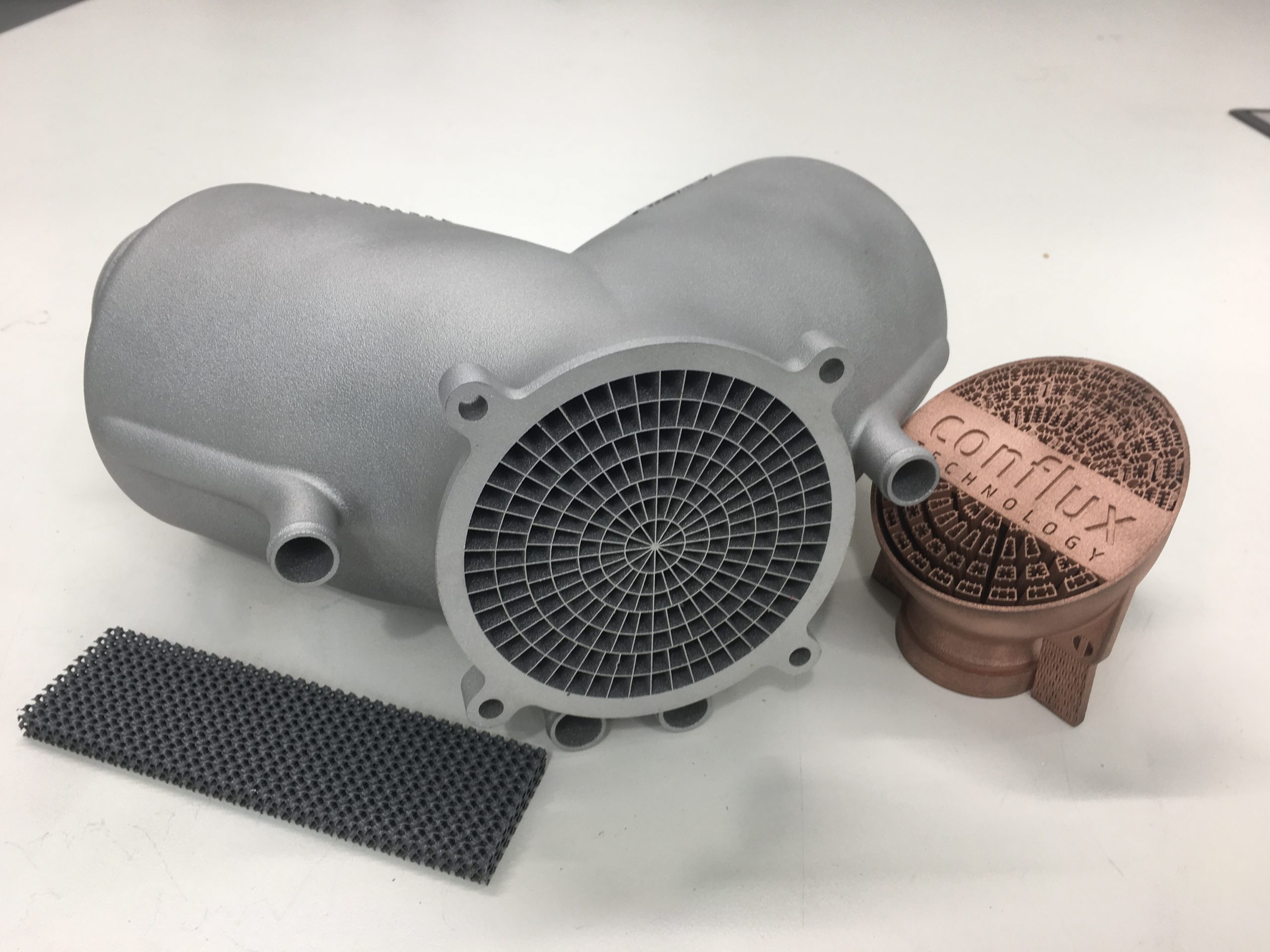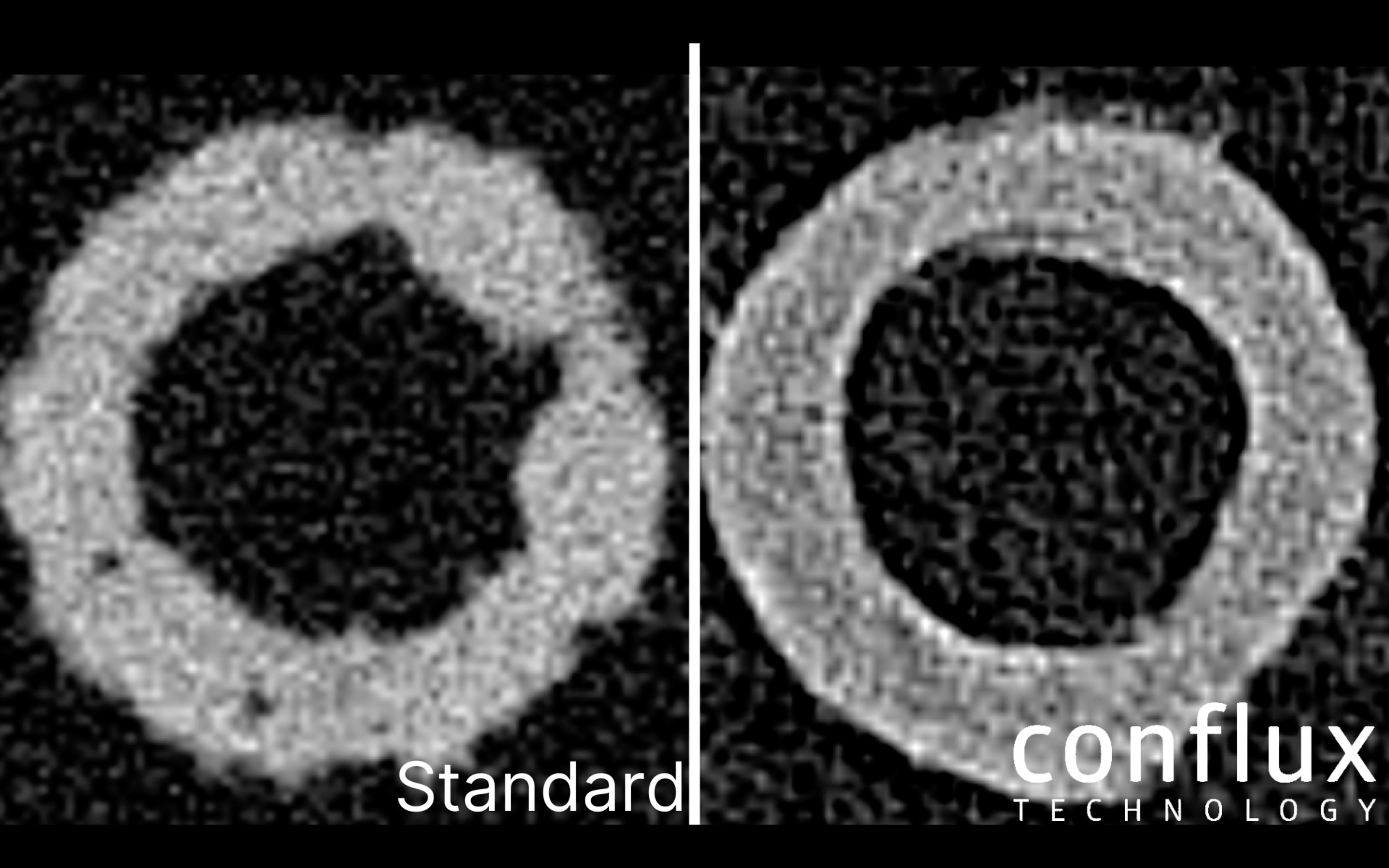Heat exchanger 3D printing specialist Conflux Technology has teamed up with Deakin University’s School of Engineering and Institute for Frontier Materials (IFM) to develop new aluminum alloys for its 3D printed heat exchangers.
The research project is supported by $138,000 in funding from the Innovative Manufacturing Cooperative Research Centre (IMCRC) and over the next nine months will aim to produce alloys with enhanced material properties that will enhance the capabilities of Conflux’s heat exchangers.
“Supporting novel alloy development specific to 3D printing processing conditions will maximize heat exchange efficiency, benefiting a number of sectors across Australia, from aerospace to energy,” said Dr Matthew Young, IMCRC’s Manufacturing Innovation Manager. “More broadly, it will enable an Australian manufacturing sovereign capability to produce products with improved performance, geometries and fabrication.
“As this project demonstrates, enabling research institutions and industry to build symbiotic relationships remains key to developing a world-leading Australian manufacturing industry.”

Conflux’s 3D printed heat exchangers
Priding itself on being a “thermal technology pioneer” and backed by the likes of AM Ventures, Conflux was founded in 2017 by Michael Fuller, an engineer and designer of Formula 1, World Rally and Le Mans-winning race cars. Fuller leverages metal 3D printing to transfer his learnings from heat exchangers in the racing world into other industries, such as aerospace, automotive, and oil and gas.
Conflux currently delivers 3D printed heat exchangers to multiple clients in these sectors with a unique design that provides quality, performance, cost, and lead time benefits over conventional devices. The firm also provides a range of engineering services to its customers spanning initial product design through to post-processing support.
In October last year, Conflux closed a AUD $8.5 million financing round and announced a significant breakthrough within its R&D workflow. The firm had adopted Australia’s ‘Synchrotron’ particle accelerator in order to identify hidden anomalies within 3D printed parts and inspect its heat exchangers at a sub-macroscopic level. With the new cash, the firm said it planned to accelerate its transition from R&D into “fully-fledged production.”

Improving heat exchanger performance
According to Conflux, its 3D printing-led approach delivers heat exchangers with significant geometrical advantages which cannot be achieved via conventional manufacturing techniques. Now, the firm is endeavoring to improve the performance of its heat exchangers further through developing new aluminum alloys with Deakin University. The two partners will look to develop aluminum heat exchanger alloys with enhanced material properties that optimize the devices’ heat exchange capabilities.
“At Conflux, we strive in our internal program of research and development to creat the technologies that transform heat transfer efficiencies,” said Fuller. “It has been a long-held ambition to partner with Deakin University on this project to create truly bespoke solutions tailored to meet our necessarily ambitious targets.”
The research partnership is part of the IMCRC activate project, which the center believes could deliver significant advances in Australia’s additive manufacturing capabilities. The activate program was introduced n 2020 to support short-term, industry-led research projects to help Australian manufacturers gain a competitive edge as they move out of the Covid-19 pandemic.
“The outcomes of this project will further reinforce Conflux Technology’s place at the pinnacle of heat transfer technologies enabled by additive manufacturing and consequently fortify Australia’s position as an advanced manufacturing nation,” Fuller added.
Conflux will work with Deakin University’s School of Engineering and IFM to design, manufacture, and characterize the novel aluminum alloys. The university’s IFM has created a cutting-edge software that accelerates alloy design and optimizes alloy processes, providing notable benefits over traditional “trial and error” techniques.
“Currently, there’s a limited range of materials available for 3D printing, few of which possess ideal material properties required for heat exchange applications,” said Deakin University’s Dr Qi Chao. “To remedy this, Conflux Technology’s team have drawn from their considerable experience in heat exchanger design and manufacturing to define the enhanced material properties they require to improve their product.
“Using our rapid alloy development program, we can then deliver them the next generation of competitive and high-performance novel aluminum alloys for industrial application.”
Advances in 3D printed heat exchangers
Alongside Conflux, there are several other players making significant advances within 3D printed heat exchanger applications.
3D printer manufacturer 3D Systems is currently helping the Army Research Laboratory (ARL) to develop topologically optimized heat exchangers for the US Army, and solid-state metal 3D printing specialist Fabrisonic is continuing its partnership with NASA’s Jet Propulsion Laboratory to produce 3D printed heat exchangers for its spacecraft using its proprietary ultrasonic additive manufacturing (UAM) technology.
Last year, GE Research reached a thermal milestone when it successfully tested a novel 3D printed heat exchanger prototype at temperatures of up to 900°C, while researchers at RMIT University developed their own set of next-generation 3D printed cooling devices that could be key to solving one of hypersonic flight’s biggest issues.
Elsewhere, a team of researchers from the University of Illinois at Urbana-Champaign leveraged 3D printing to produce a next-generation ultra-compact heat exchanger which reportedly delivers performance increases of up to 2,000 percent.
Subscribe to the 3D Printing Industry newsletter for the latest news in additive manufacturing. You can also stay connected by following us on Twitter and liking us on Facebook.
Looking for a career in additive manufacturing? Visit 3D Printing Jobs for a selection of roles in the industry.
Subscribe to our YouTube channel for the latest 3D printing video shorts, reviews and webinar replays.
Featured image shows Conflux Technology’s 3D printed heat exchanger. Photo via Conflux Technology.



